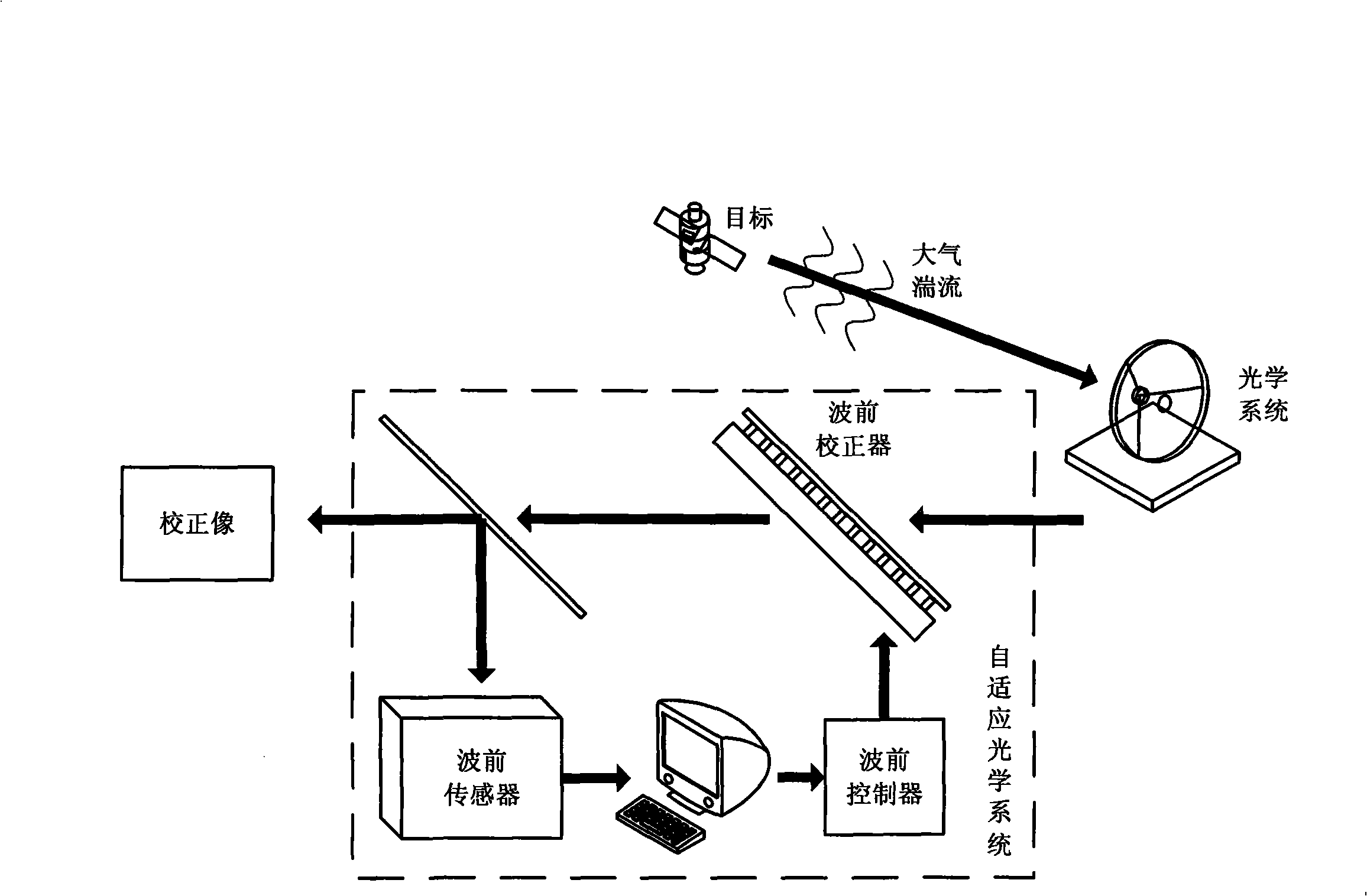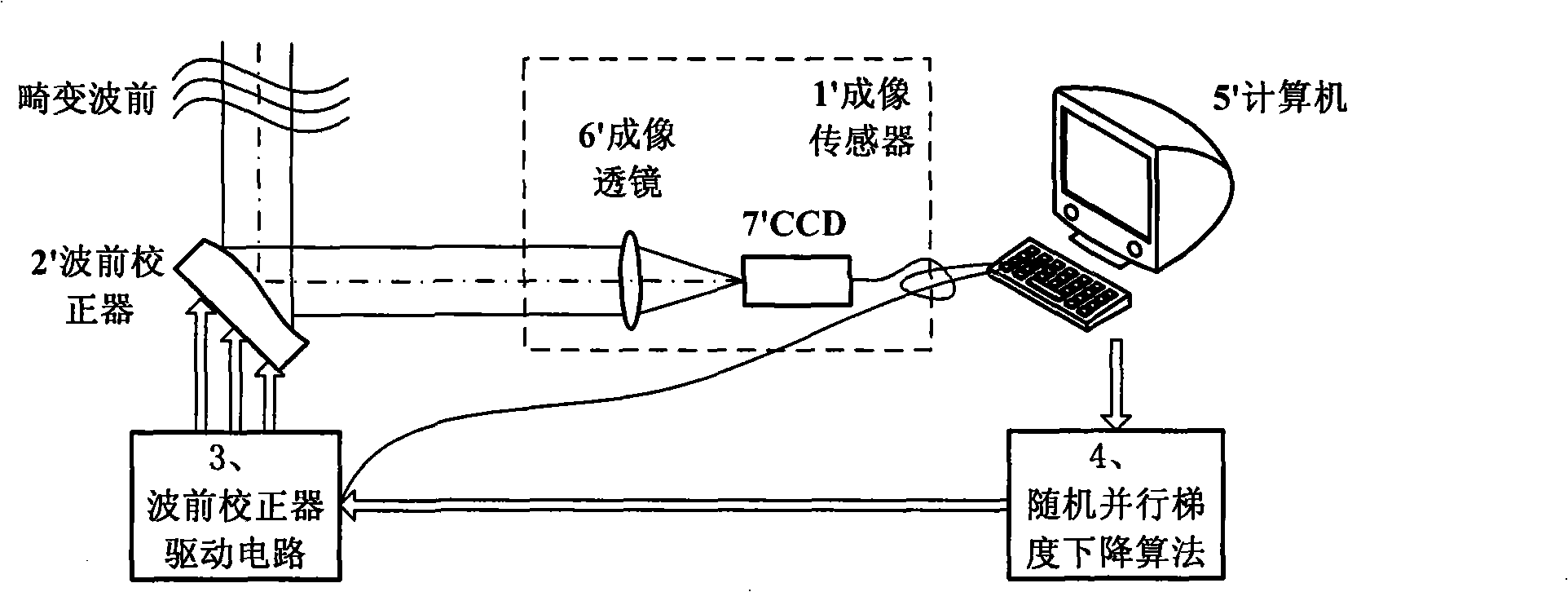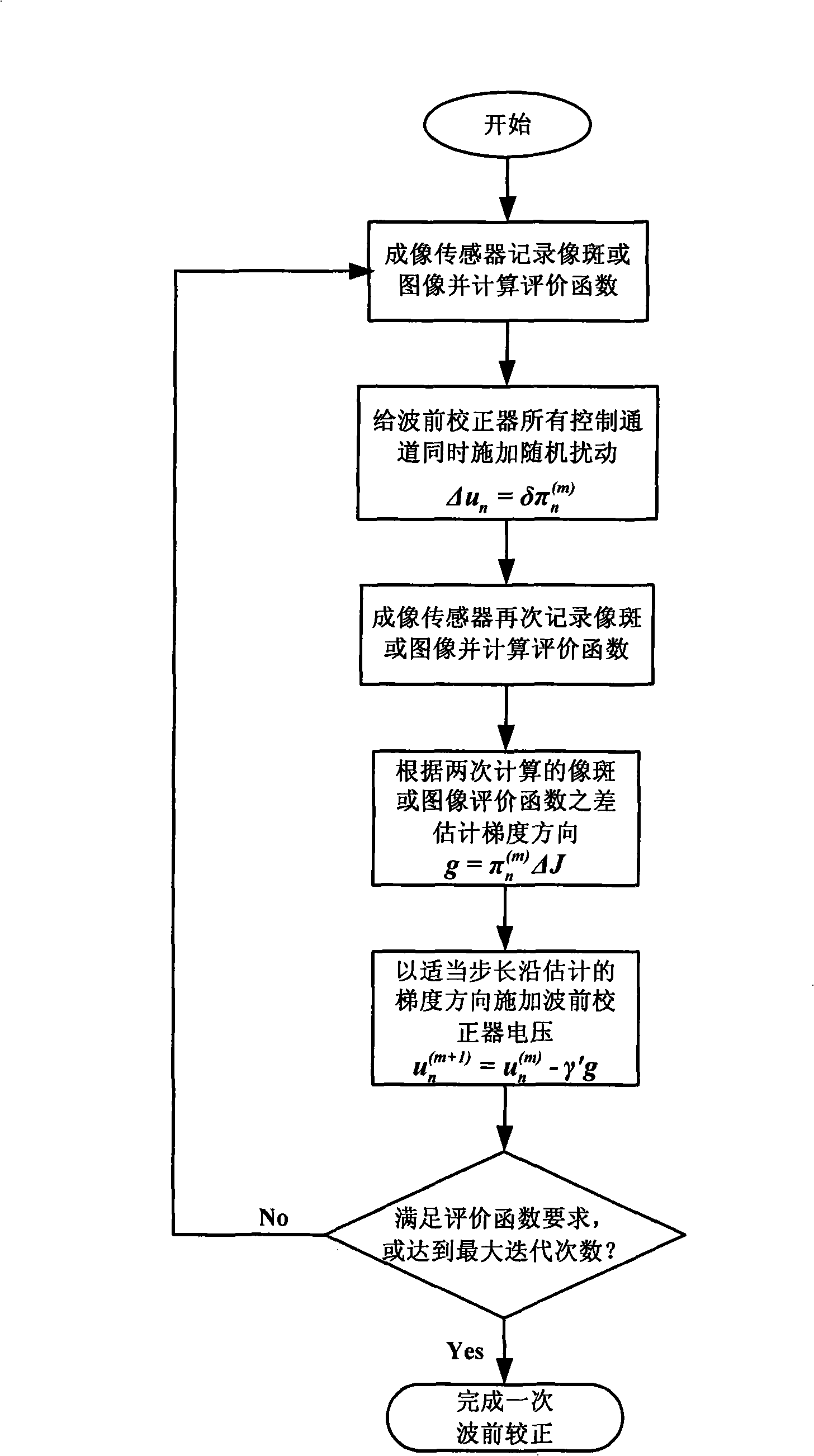Wavefront-free detector self-adapting optical system based on random paralleling gradient descent algorithm
A gradient descent algorithm and adaptive optics technology, applied in the field of optics, can solve the problems of complex system structure and low utilization of light energy, and achieve the effect of simple algorithm, reduced volume and weight, and simplified structure
- Summary
- Abstract
- Description
- Claims
- Application Information
AI Technical Summary
Problems solved by technology
Method used
Image
Examples
Embodiment
[0036] Such as figure 2As shown, an adaptive optics system based on a stochastic parallel gradient descent algorithm is composed of an imaging sensor 1, a wavefront corrector 2, a wavefront corrector driving circuit 3, a stochastic parallel gradient descent algorithm 4, and a computer 5, wherein the imaging sensor 1 is composed of Composed of imaging lens 6 and CCD7, computer 5 is responsible for the acquisition and processing of image spots or images, the realization of SPGD algorithm and the output of deformable mirror control signals.
[0037] When the adaptive optics system is working, first a frame image is collected by the CCD7 and sent to the computer 5, and the image spot or image evaluation function is calculated by the computer 5, and then the computer 5 is controlled by the SPGD algorithm to output a random disturbance signal, and the disturbance signal is corrected by the wavefront After being amplified by the driver drive circuit 3, it is applied to the wavefront...
PUM
 Login to View More
Login to View More Abstract
Description
Claims
Application Information
 Login to View More
Login to View More - R&D
- Intellectual Property
- Life Sciences
- Materials
- Tech Scout
- Unparalleled Data Quality
- Higher Quality Content
- 60% Fewer Hallucinations
Browse by: Latest US Patents, China's latest patents, Technical Efficacy Thesaurus, Application Domain, Technology Topic, Popular Technical Reports.
© 2025 PatSnap. All rights reserved.Legal|Privacy policy|Modern Slavery Act Transparency Statement|Sitemap|About US| Contact US: help@patsnap.com



